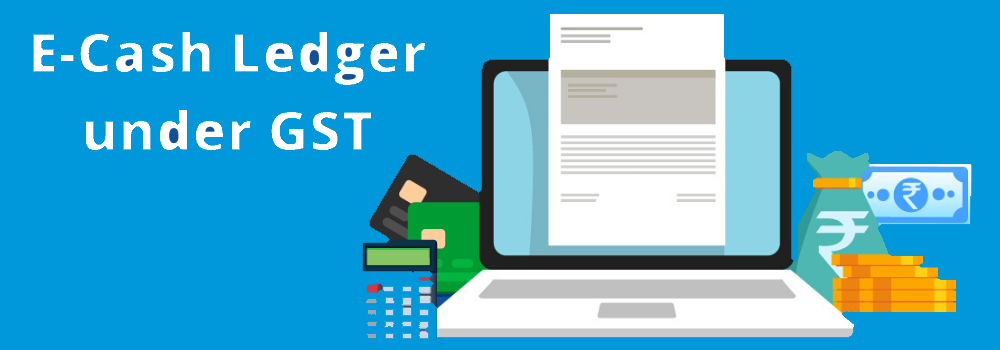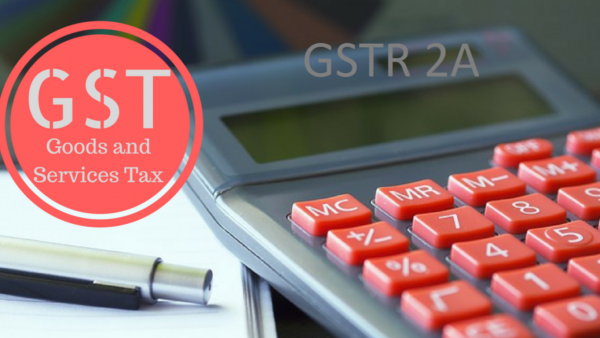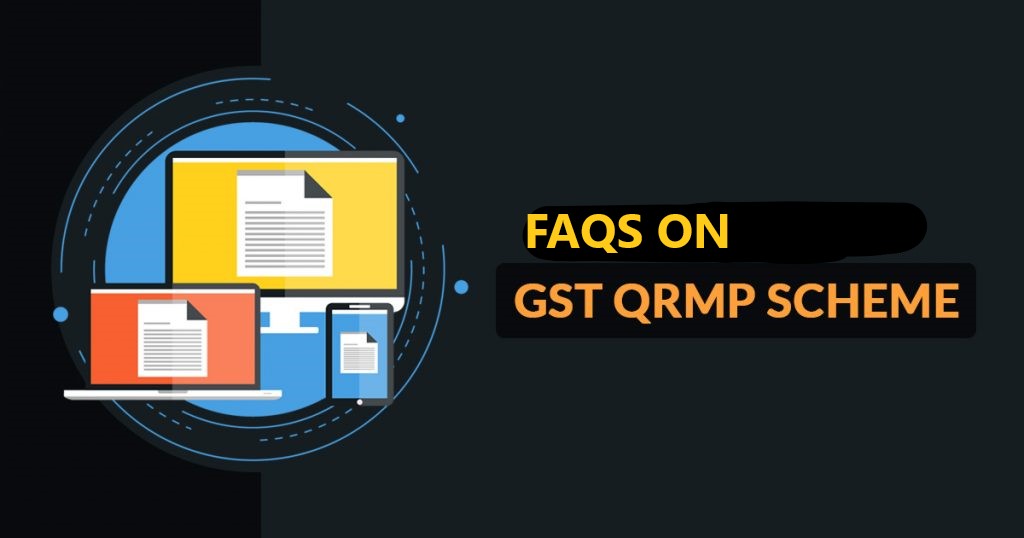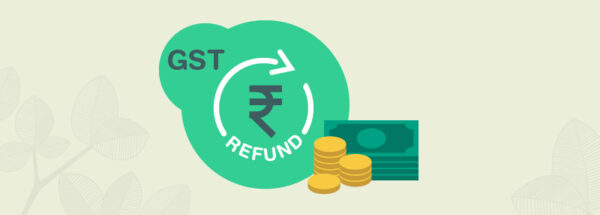Every deposit made by a person by internet banking or by using credit or debit cards or National Electronic Fund Transfer (NEFT) or Real Time Gross Settlement (RTGS) or by over the counter deposit will be credited to the electronic cash ledger.
The amount available in the electronic cash ledger may be used for making any payment towards tax, interest, penalty, fees or any other amount payable.
For ready reference of our readers the FAQs on Electronic Cash Ledger covering all the aspects are given below:
Q.1 What is the Electronic Cash Ledger?
Ans: The Electronic Cash Ledger contains a summary of all the deposits/payments made by a taxpayer. In the ledger, information is kept minor head-wise for each major head. For convenience of user, the ledger is displayed major head-wise i.e., IGST, CGST, SGST/UTGST, and CESS. Each major head is divided into five minor heads: Tax, Interest, Penalty, Fee, and Others. It can be accessed under the post-login mode on the GST portal under Services > Ledgers > Electronic Cash Ledger
Electronic Cash Ledger is an account of the taxpayer maintained by GST system reflecting the cash deposits in recognized Banks and payments of taxes and other dues made by the taxpayer. The Tax Deducted at Source (TDS) and Tax Collected at Source (TCS) are also accounted for in the Electronic Cash Ledger as cash deposits of the taxpayer.
A registered taxpayer can make cash deposits in the recognized Banks through the prescribed modes to the Electronic Cash Ledger using any of the Online or Offline modes permitted by the GST Portal. The Cash deposits can be used for making payment(s) like tax liability, interest, penalties, fee, and others.
The Electronic Cash Ledger has four Major Heads IGST, CGST, SGST/UTGST, and CESS. Each of these Major Heads have the five following Minor Heads:
1. Tax
2. Interest
3. Penalty
4. Fee
5. Others
When a taxpayer creates a Challan, the taxpayer chooses the amounts to be added to each Minor Head within Each Major Head. Once the payment against the Challan is made successfully and the CIN communicated to the GST system, the Electronic Cash Ledger gets updated with the funds under the Major and Minor Heads respectively as per the Challan. Cross utilization of funds across major or minor heads is NOT possible once payment is made.
Let us understand this better with an example. A taxpayer made a cash deposit of INR 1000 to IGST – Tax through net banking. After successful payment, the Bank reference number communicated by the bank along with the CIN to the GST system will be reflected in the Electronic Cash Ledger as reference number. The tax payer can utilise this cash deposit of INR 1000 in the cash ledger to make payment ONLY of the IGST – Tax liability by debiting the Cash Ledger.
Q.2 Where is the E-Cash Ledger maintained?
Ans: Electronic Cash Ledger is maintained on the GST Portal available at https://www.gst.gov.in/
Q.3 How can a taxpayer view their E-Cash Ledger?
Ans: A taxpayer can view their Electronic Cash Ledger by logging on to the GST Portal available at https://www.gst.gov.in/
Q.4 Can anyone else view my E- Cash Ledger?
Ans: Electronic Cash Ledger can only be viewed by the taxpayers themselves, or their authorized signatories and GST Practitioner. It can also be viewed by their Jurisdictional Officials (JO).
Q.5 How can a taxpayer view details of transactions in the E-Cash Ledger for a specific period?
Ans: To view the details of the transactions, the taxpayer can view the Electronic Cash Ledger for the required duration. The option is available on the landing page of the Electronic Cash Ledger. A maximum of 6 months transactions can be viewed at a time.
Q.6 How can the cash available in the E- Cash Ledger be utilised? Can a taxpayer utilise the amount available in any minor head of a major head for any other minor head of the same major head?
Ans: The amount available in the Electronic Cash Ledger can be utilised for payment of any liability for the respective major and minor heads. For example, liability for the tax under SGST/UTGST can be settled only from the available amount of cash under SGST/UTGST Major head.
For example, an amount of INR 1000 is available under minor head ‘tax’ of major head ‘SGST/UTGST’ and the taxpayer has a liability of INR 200 for minor head ‘interest’ under the same major head ‘SGST/UTGST’. Since, there is no amount available under minor head ‘interest’ under major head “SGST/UTGST”, therefore, interest payment cannot be made from the amount available under ‘tax’ of the same major head.
Q.7 Is transfer of funds between the major heads permissible for discharging liabilities?
Ans: Amount available under one major head (SGST/UTGST, CGST, IGST or CESS) cannot be utilised for discharging the liability under any other major head. For example, amount available in SGST/UTGST cannot be utilised for discharging liabilities under CGST, IGST, or CESS and vice versa.
Q.8 Would the amount deposited inadvertently in the E-Cash Ledger remain there?
Ans: Yes, any additional amount deposited inadvertently will remain in the Electronic Cash Ledger and can be used to discharge liabilities in subsequent tax periods.
Alternatively, the excess amount deposited in the Electronic Cash Ledger can be claimed as refund by selecting the relevant option while filing the periodic return or via refund application.
Q.9 How can a taxpayer check the available balance in the E-Cash Ledger?
Ans: A taxpayer can log on to the GST Portal Portal and navigate to the electronic cash ledger home page in the following way : Services > Ledgers > Electronic cash Ledger. The balance is shown on the right hand corner under the head “Cash balance as on Date:”. A summary of the major head wise balance is displayed when the cursor is placed on the same. To know the details of the transaction the taxpayer needs to submit a request for the report by giving the date range.
Q.10 Can the amount available in cash ledger be deemed as payment for any liability?
Ans: No, unless the taxpayer makes a debit entry from a cash ledger for a specific liability, the amount lying in the cash ledger cannot be assigned to any liability.
Q.11 Can a Departmental Officer debit my cash ledger in lieu of outstanding dues?
Ans: Yes, in exceptional circumstances, especially when the amount of additional demand is not stayed by the Appellate Authority, Tribunal, or Court, the amount can be debited from your E-Cash Ledger to the extent of the demand.
Q.12 Is it necessary to claim refund of the excess amount available in the E-Cash Ledger?
Ans: No, the amount may continue to remain in the cash ledger and can be utilised for any future liability.
Q.13 Do the funds in the E-Cash Ledger include my Input Tax Credits (ITC)?
Ans: No, Input Tax Credits is only available in the Electronic Credit Ledger.
Q.14 Do the funds in the E-Cash Ledger include my TDS and TCS Credits? If yes, can I use them to discharge my tax liabilities?
Ans: Yes, all your TDS & TCS credits, once accepted by you, will reflect in your Electronic Cash Ledger. You can use these credits to discharge tax liabilities.
Q.15 When will payments made through challans be reflected in the cash ledger?
Ans:
| S.No. | Mode of Payment | When is the deposit reflected in the Cash Ledger |
| 1. | Online payment through net banking in authorized Banks | On receipt of CIN from the bank. It is generally shared by the bank instantly but at times there may be delay. |
| 2. | OTC payment through cash and self-bank cheque in authorized banks | On receipt of CIN from the bank. It is generally shared by the bank instantly on receipt of cash or realization of cheque but at times there may be delay |
| 3. | OTC payment through other bank cheques of same station in authorized Banks | On receipt of CIN from the bank. In case of cheques Banks are given 90 days’ time period to share the CIN details |
| 4. | OTC payment through other outstation bank cheques in authorized Banks | On receipt of CIN from the bank. In case of cheques Banks are given 90 days’ time period to share the CIN details |
| 5. | Online NEFT/RTGS payments though non-authorized but recognized Banks | As soon as RBI shares CIN details. Usually can be on the same day. |
| 6. | Over the counter NEFT/RTGS payments through non-authorized Banks | As soon as RBI shares CIN details. Usually can be on the same day. |
| 7. | Payment through Credit Card/Debit Card | After 24 hours of Payment. But once amount is debited and Payment Gateway confirms the receipt of amount, Banks are given 45 days’ time to confirm the payment and cash ledger will be updated after final confirmation from the bank. |
On successful payment CIN is communicated by the Bank to the GST System along with a unique reference number generated by the banking system which gets captured in the electronic cash ledger of the taxpayer. The Electronic Cash Ledger gets updated on a near real time basis.
In case of outstation cheque in OTC mode, CIN and the bank reference number (BRN) is communicated by the Bank to GST System when the cheque is realized and amount is credited to the Government account from the taxpayers account.
On receipt of the CIN, the Cash Ledger gets updated on a near real time basis.
Q.16 What should a taxpayer do if his payments through challan are not reflected in the cash ledger?
Ans: The taxpayer should raise a grievance on the GST Portal 24 hours after the successful payment communication is made by the Bank to the Taxpayer using the GST PMT-06 form.
Q.17 What should a taxpayer do if the displayed figures in the cash ledger appear erroneous to him?
Ans: The taxpayer can raise a grievance on the GST Portal using the GST PMT-04 form.
Q.18 Can I perform intra-head or inter-head transfer of amount available in E- Cash Ledger?
Ans: Yes, you can perform intra-head or inter-head transfer of amount, as available in Electronic Cash Ledger, using Form GST PMT-09. Form GST PMT-09 enables any registered taxpayer to perform, intra-head or inter-head transfer of amount, as available in Electronic Cash Ledger. Thus, a registered taxpayer can now file Form GST PMT-09 for transfer of any amount of tax, interest, penalty, fee or others, under one (major or minor) head to another (major or minor) head, as available in the Electronic Cash Ledger.
Navigate to Services > Ledgers > Electronic Cash Ledger > File GST PMT-09 For Transfer of Amount option to file Form GST PMT-09.
Q.19 What will happen to the available amount in E- Cash Ledger left in old GSTIN of taxpayer, who has received an intimation that a new GSTIN has been assigned to him/her for UT of Ladakh? (Related to Creation of new UT of Ladakh and consequent changes on GST Portal for taxpayers)
Ans: You need to file a refund application, for the amount available in E-Cash Ledger, pertaining to old GSTIN. The refund application will be processed by the designated Refund Officer, of the old registration and the amount will be credited to your Bank Account as mentioned in old GSTIN.
Q.20 What will happen to the available amount in E– Cash Ledger left in old GSTIN of taxpayer, who has received an intimation that a new GSTIN has been assigned to him/her for UT of Dadra and Nagar Haveli and Daman and Diu? (Related to Merger of UT of Daman & Diu with UT of Dadra and Nagar Haveli and consequent changes on GST Portal for taxpayers)
Ans: You need to file a refund application, for the amount available in E-Cash Ledger, pertaining to old GSTIN. The refund application will be processed by the designated Refund Officer of the old registration and the amount will be credited to your Bank Account as mentioned under old GSTIN.
B. Manual on Electronic Cash Ledger
How can I view the E-Cash Ledger?
The Electronic Cash Ledger contains a summary of all the deposits made by a taxpayer. In the ledger, information is displayed major head-wise i.e., IGST, CGST, SGST/UTGST and CESS. Each major head is further divided into five minor heads: Tax, Interest, Penalty, Fee and Others.
To view the Electronic Cash Ledger, perform the following steps:
1. Access the https://www.gst.gov.in/ URL. The GST Home page is displayed.
2. Login to the GST Portal with valid credentials.
3. Click the Services > Ledgers > Electronic Cash Ledger command.

4. The Electronic Cash Ledger page is displayed. Under the Cash Balance as on date column, the cash balance is displayed.
Note: You can click the link for the amount displayed under Cash Balance as on date to view the summary of the Cash Balance.
5. Click the Electronic Cash Ledger link.

6. Select the “From” and “To” date using the calendar to select the period for which you want to view the Electronic Cash Ledger.
7. Click the GO button.
Note: You can view the E-Cash Ledger for a maximum period of six months only.

The Electronic Cash Ledger – Details are displayed.
Note:
- Click the SAVE AS PDF button to save the Electronic Cash Ledger in the pdf format.
- Click the SAVE AS EXCEL button to save the Electronic Cash Ledger in the excel format.

You can click the amount displayed under any of the Major Heads to view the Minor Heads details.
The pop-up window appears with the respective Minor Head details of the selected Major Head, as shown in the screen.

Source: GST portal
***
[rainbow]Don’t miss the next GST Update / Article / Judicial pronouncement[/rainbow]
Subscribe to our newsletter from FREE to stay updated on GST Law
Resolve your GST queries from national level experts on GST free of cost.
Frah Saeed is a law graduate specializing in the core field of indirect taxes and is the Co-founder of taxwallah.com. She has authored many publications on GST and is into full-time consultancy on GST to big corporates. She as a part of taxwallah.com heads a team comprising of Chartered Accountants and Advocates and plays a key role in our mission to disseminate GST knowledge to all.




